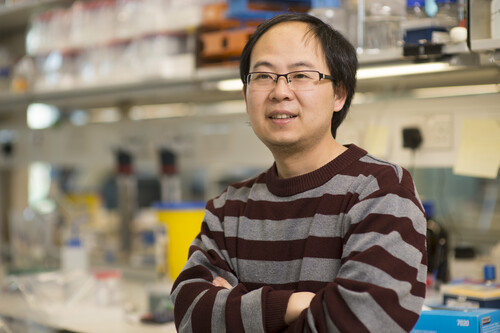
The Zhang Lab, in collaboration with the Kranz Lab of Washington University in St. Louis and Zhu Lab of Nanjing University of Chinese Medicine, recently determined the structural basis and mechanisms underlying key steps in Cytochromes c regulation. Their findings, titled “Structures of the CcmABCD heme release complex at multiple states” are republished in Nature.
Cytochromes carry periplasmic hemeproteins that are crucial in electron transport in respiration and photosynthesis. As part of the maturation process of cytochrome c, heme must be transported across the membrane to attach to a cysteine residue of the cytochrome. One of the first steps in the maturation system includes the transport of heme by the membrane complex CcmABCD to the periplasmic heme chaperone CcmE. Until now, it was unclear how this process was accomplished.
The authors shared high resolution cryo-EM structures of CcmABCD in an unbound form, bound to an ATP mimic, and in complex with ATP and heme, contributing to the identification of the ATP-binding site in CcmA and the heme-binding site in CcmC. Functional studies complemented the structural determination and pointed toward a model of heme trafficking and transfer to CcmE, followed by the release of holoCcmE from the ATP-dependent CcmABCD.
The co-first authors include Jia Li, a visiting student to the Zhang lab who performed the cryo-EM work on various states of the Ccm complex, and Wan Zheng, a graduate student from the Zhu lab who carried out mutagenesis and enzymatic analyses of Ccm. Their findings further our understanding of the ubiquitous and unique underpinnings of the ATP-dependent heme release complex required for cytochrome c maturation.
By Brigitte Naughton